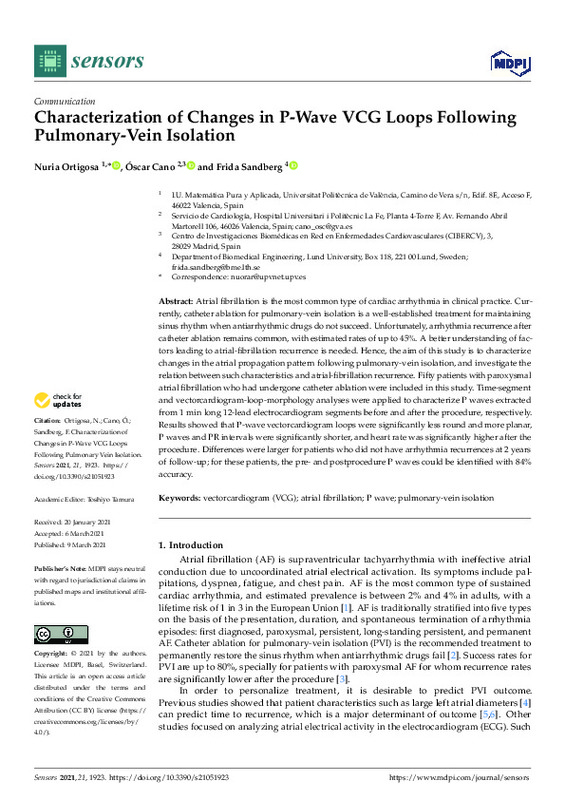JavaScript is disabled for your browser. Some features of this site may not work without it.
Buscar en RiuNet
Listar
Mi cuenta
Estadísticas
Ayuda RiuNet
Admin. UPV
Characterization of Changes in P-Wave VCG Loops Following Pulmonary-Vein Isolation
Mostrar el registro completo del ítem
Ortigosa, N.; Cano, Ó.; Sandberg, F. (2021). Characterization of Changes in P-Wave VCG Loops Following Pulmonary-Vein Isolation. Sensors. 21(5):1-11. https://doi.org/10.3390/s21051923
Por favor, use este identificador para citar o enlazar este ítem: http://hdl.handle.net/10251/182696
Ficheros en el ítem
Metadatos del ítem
| Título: | Characterization of Changes in P-Wave VCG Loops Following Pulmonary-Vein Isolation | |
| Autor: | Cano, Óscar Sandberg, Frida | |
| Entidad UPV: |
|
|
| Fecha difusión: |
|
|
| Resumen: |
[EN] Atrial fibrillation is the most common type of cardiac arrhythmia in clinical practice. Currently, catheter ablation for pulmonary-vein isolation is a well-established treatment for maintaining sinus rhythm when ...[+]
|
|
| Palabras clave: |
|
|
| Derechos de uso: | Reconocimiento (by) | |
| Fuente: |
|
|
| DOI: |
|
|
| Editorial: |
|
|
| Versión del editor: | https://doi.org/10.3390/s21051923 | |
| Coste APC: |
|
|
| Código del Proyecto: |
|
|
| Agradecimientos: |
N. Ortigosa acknowledges the support from Spanish Ministerio de Ciencia, Innovacion, y Universidades en El Marco del Programa Estatal de Promocion del Talento y su Empleabilidad en I+D+i -Subprograma Estatal de Movilidad-under ...[+]
|
|
| Tipo: |
|









